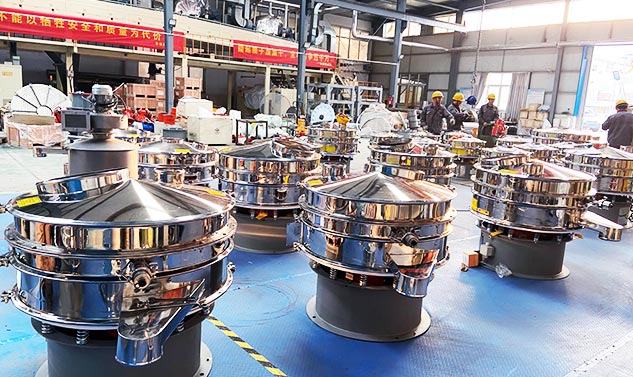This form is the fastest way to contact us for a free consultation, quote and price list request, we will reply you asap.

- Whatsapp: +86 134 6222 7588
- Wechat: +86 134 6222 7588
- E-Mail:sales@dzscreen.com
- Skype: +86 134 6222 7588
In the fast-paced world of industrial production, every piece of equipment counts. When it comes to moving materials smoothly, hanging vibrating feeders are quietly stealing the spotlight. These clever systems save space, cut costs, and keep operations humming. If you’re looking to optimize your facility or stay ahead of industry shifts, this guide breaks down what these feeders do, why they’re a smart pick, and where they’re headed.
Picture a trough dangling from cables, gently shaking to nudge materials along. That’s the essence of a hanging vibrating feeder. Suspended from overhead beams or frames, it uses vibrations—powered by an electric motor or electromagnetic drive—to transport everything from fine powders to chunky aggregates. Unlike floor-mounted feeders, it’s elevated, freeing up ground space and fitting neatly into complex layouts.
The magic lies in its control. You can tweak the vibration intensity to match your material’s flow needs, ensuring a steady stream without jams. It’s a practical solution for businesses aiming to keep things moving efficiently.
Here’s what makes these feeders stand out:
Floor Space Freedom: By hanging overhead, they leave your ground clear for other machinery or storage—perfect for tight spaces.
Low Wear and Tear: Suspended designs reduce contact with the floor, cutting down on maintenance and extending equipment life.
Flexible Handling: Whether it’s grains, chemicals, or ores, these feeders adapt to various materials with ease.
Quiet Operation: Less vibration reaches the structure, meaning a calmer, less disruptive workplace.
Imagine a processing plant where floor clutter used to slow things down. With a hanging feeder, materials flow seamlessly, and the workspace stays open—a win for productivity.
Hanging vibrating feeders are proving their worth across industries:
Mining: Feeding crushed rock into sorting systems with pinpoint accuracy.
Food Production: Moving delicate ingredients like spices without bruising or clumping.
Chemicals: Dosing powders into reactors, keeping processes clean and controlled.
Recycling: Guiding scrap materials into shredders or balers efficiently.
A recycling center, for example, might use one to feed plastic pellets, cutting processing time by 10% while keeping the floor clear for other tasks. It’s this kind of real-world value that drives adoption.
Choosing a hanging vibrating feeder isn’t a one-size-fits-all deal. Here’s what to consider:
Material Type: Sticky or free-flowing? The trough’s design and vibration strength need to match.
Throughput Needs: Calculate your hourly output to size the feeder correctly.
Site Setup: Check ceiling height and structural support for safe installation.
Durability: For abrasive materials, opt for reinforced materials to avoid premature wear.
Getting these details right means your feeder will perform like a trusted partner, not a constant fix.
The material handling world is evolving, and hanging vibrating feeders are keeping up:
Smart Tech: Sensors and IoT are enabling remote monitoring and auto-adjustments for peak performance.
Eco-Friendly Designs: Newer models use less power, aligning with global sustainability pushes.
Custom Builds: Manufacturers are offering tailored options for niche applications, from food-grade finishes to heavy-duty frames.
With industries leaning toward automation and greener practices, these feeders are poised to stay relevant and valuable.
This form is the fastest way to contact us for a free consultation, quote and price list request, we will reply you asap.

Copyright © 2012-2023 Xinxiang Dongzhen Machinery Co., Ltd. All Rights Reserved.